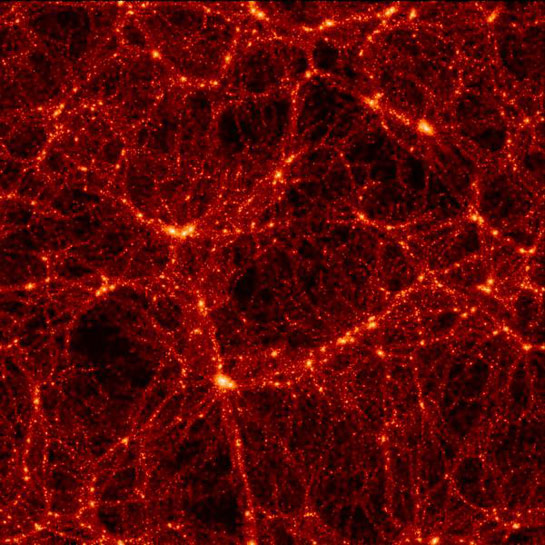A blast from the past

I used to be a scientist. I don’t do that any longer. I never felt like talking about it much, because I never thought it was a particularly interesting topic to talk about. Just like every “cool” job, being an astrophysicist (astronomer) sounds much better if you’re not in the middle of it. I specialized in computational cosmology, aka running very large computer simulations of the evolution of model universes. You don’t actually get real universes inside your computer. The models are all rather simple, and at least in the ones I was involved in there are no stars whatsoever. There weren’t even any galaxies (the visible matter is only a small fraction of all matter in the Universe, so you an run things without it and it still comes out fine). One of the challenges for the simulations was always how to visualize what you got, and that was something I tremendously enjoyed doing. (more)
In fact, I probably spent a bit too much time on making images and movies. But it was a good challenge: I wanted to get images that look visually appealing, while at the same time conveying actual scientific information. It’s not quite as straight-forward as you might imagine.
Up until about the time I became involved, people had simply plotted the individual particles in the simulation, to get black and white dots plots. The problem with that approach is that once you have a lot of particles things look rather messy. You basically can’t see anything any longer.
That image above, that’s what I came up with. Instead of showing particles, it shows an adaptively smoothed density field (the smoothing depends on how many local particles you have) in a thin slice through a simulation volume. The bright spots show you where the matter went. So you see this weird network of material, most of it in thin filaments around rather large, almost empty regions. To give you an idea of the scale, that large bright spot to the south-west of the center, that’s a massive cluster of galaxies. Our own galaxy would be almost too small to see in this image.
The image became a bit of a hit in the community, and amongst other things it made it onto the cover of a textbook. I was never very happy with the colours, but my boss - I came up with these images as a grad student - never liked my improvements. Now these kinds of images are everywhere in the simulation community. Whenever there is a new simulation, someone churns out an image like the one on top.
People sometimes ask me whether there is a connection between photography and astronomy and whether that’s how I got into photography. Of course, there is, because astronomy relies on images, but it’s slightly more complex than you’d imagine. But for me, that’s not how I got interested in photography.
But I think my science background - and my knowledge of how you make the image you want - has probably informed how I view photography, at least to some extent. It might explain why, for example, I have so little interest in photographic orthodoxy, in people bemoaning “manipulations” and all that stuff. Scientific images always tend to be very real and very fake at the same time. It’s just part of the game. Even those Hubble Space Telescope images you see, they’re not quite as real as you think.
When Thomas Ruff takes b/w NASA images and creates artificial colour images out of them… I don’t know whether he realizes that what he is doing is not so different from what astronomers do.